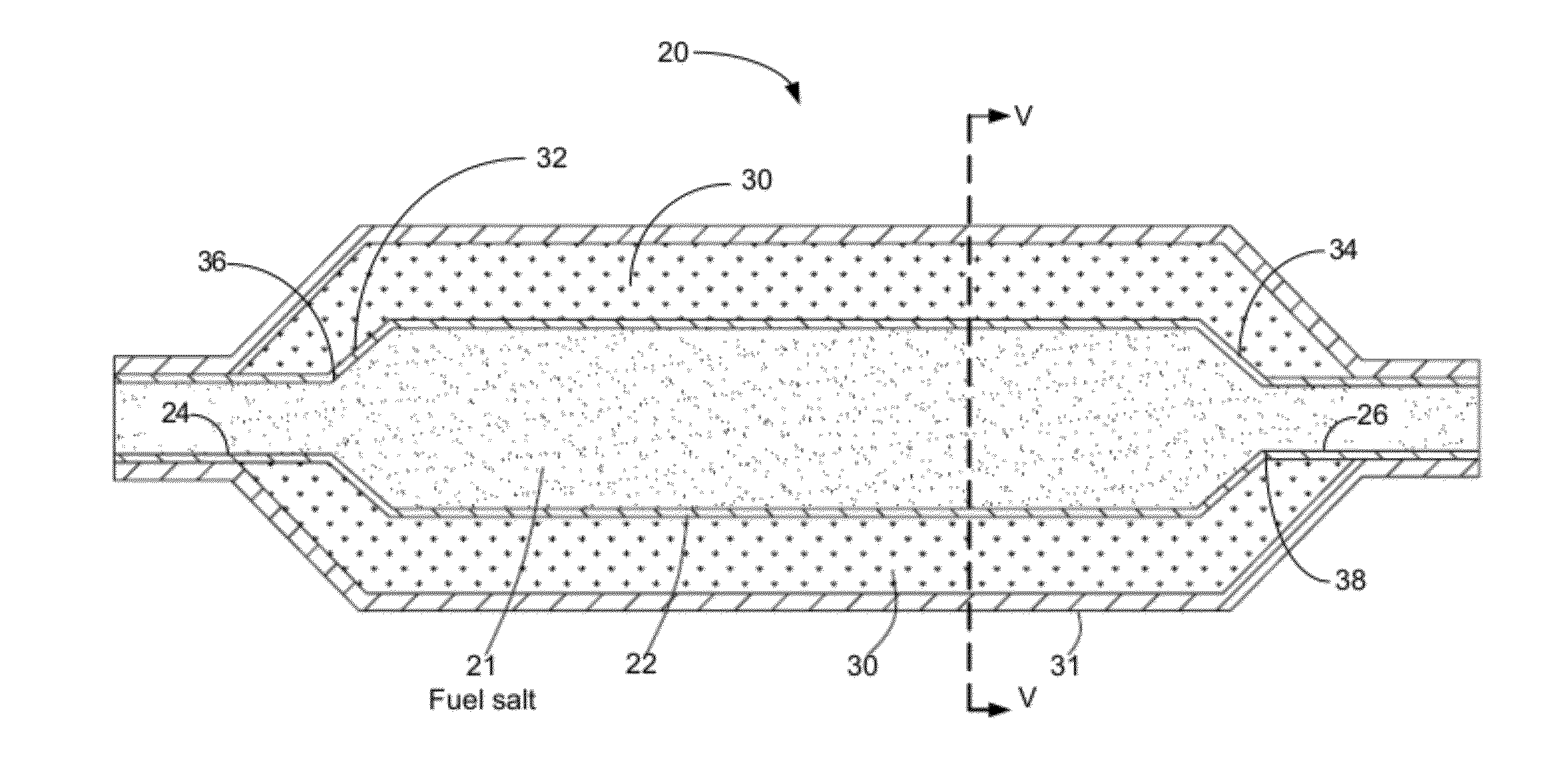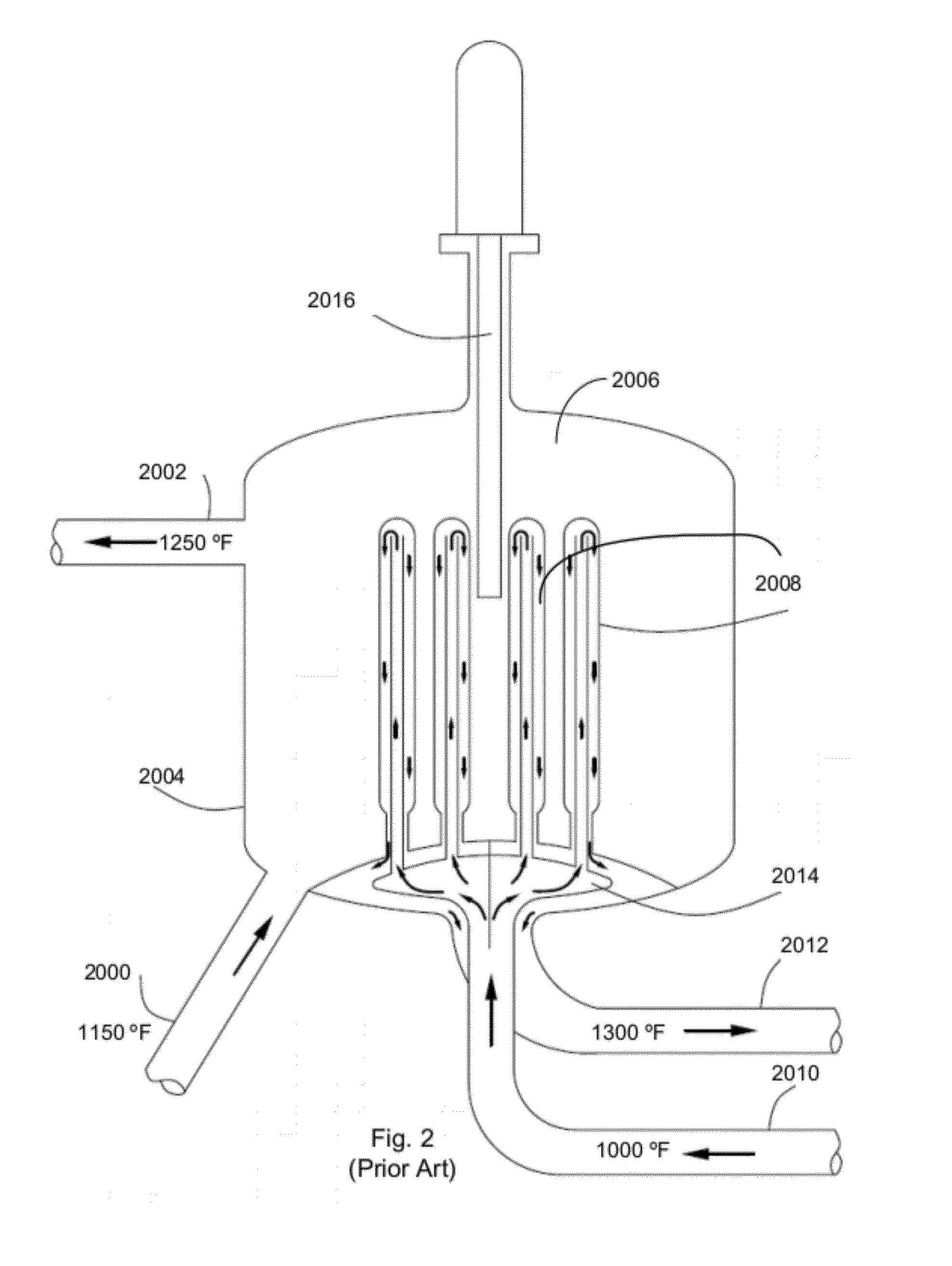Molten salt nuclear reactor
a nuclear reactor and molten salt technology, applied in nuclear reactors, thermal reactors, nuclear energy generation, etc., can solve the problems of high cost and complex technique of contacting the fuel salt, difficult fission products, and difficult to extract liquid bismuth
- Summary
- Abstract
- Description
- Claims
- Application Information
AI Technical Summary
Benefits of technology
Problems solved by technology
Method used
Image
Examples
Embodiment Construction
[0088]Generally, the present invention provides a molten salt nuclear reactor having an elongated core section in which criticality is achieved. The power producing volume of the elongated core section is such that considerably more power can be extracted in comparison with prior art molten salt nuclear reactors.
[0089]FIGS. 4 and 5 show an exemplary embodiment of a reactor core assembly 20 of the present invention. The reactor core assembly 20 has a fuel salt conduit 22 that has an input end section 24, an output end section 26 and an elongated core section 28, which is for guiding a molten fuel salt between the input end section 24 and the output end section 26. The dimensions of the elongated core section are chosen such that for a molten fuel salt having a pre-determined concentration of fissile elements, criticality is reached within the elongated core section. That is, the area of the cross-section (FIG. 5) of the elongated core section 28 and the length of the elongated core s...
PUM
 Login to View More
Login to View More Abstract
Description
Claims
Application Information
 Login to View More
Login to View More - R&D
- Intellectual Property
- Life Sciences
- Materials
- Tech Scout
- Unparalleled Data Quality
- Higher Quality Content
- 60% Fewer Hallucinations
Browse by: Latest US Patents, China's latest patents, Technical Efficacy Thesaurus, Application Domain, Technology Topic, Popular Technical Reports.
© 2025 PatSnap. All rights reserved.Legal|Privacy policy|Modern Slavery Act Transparency Statement|Sitemap|About US| Contact US: help@patsnap.com



